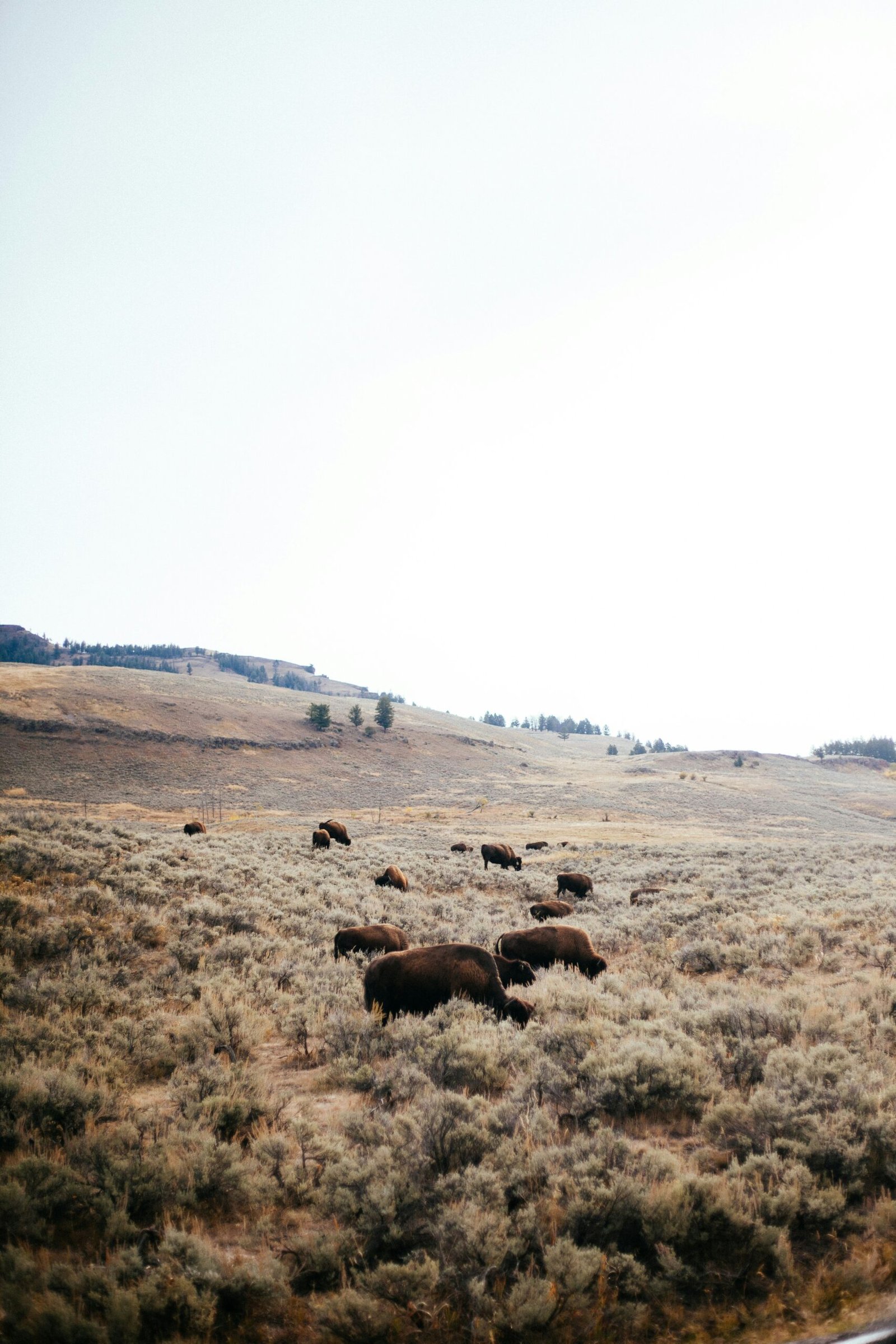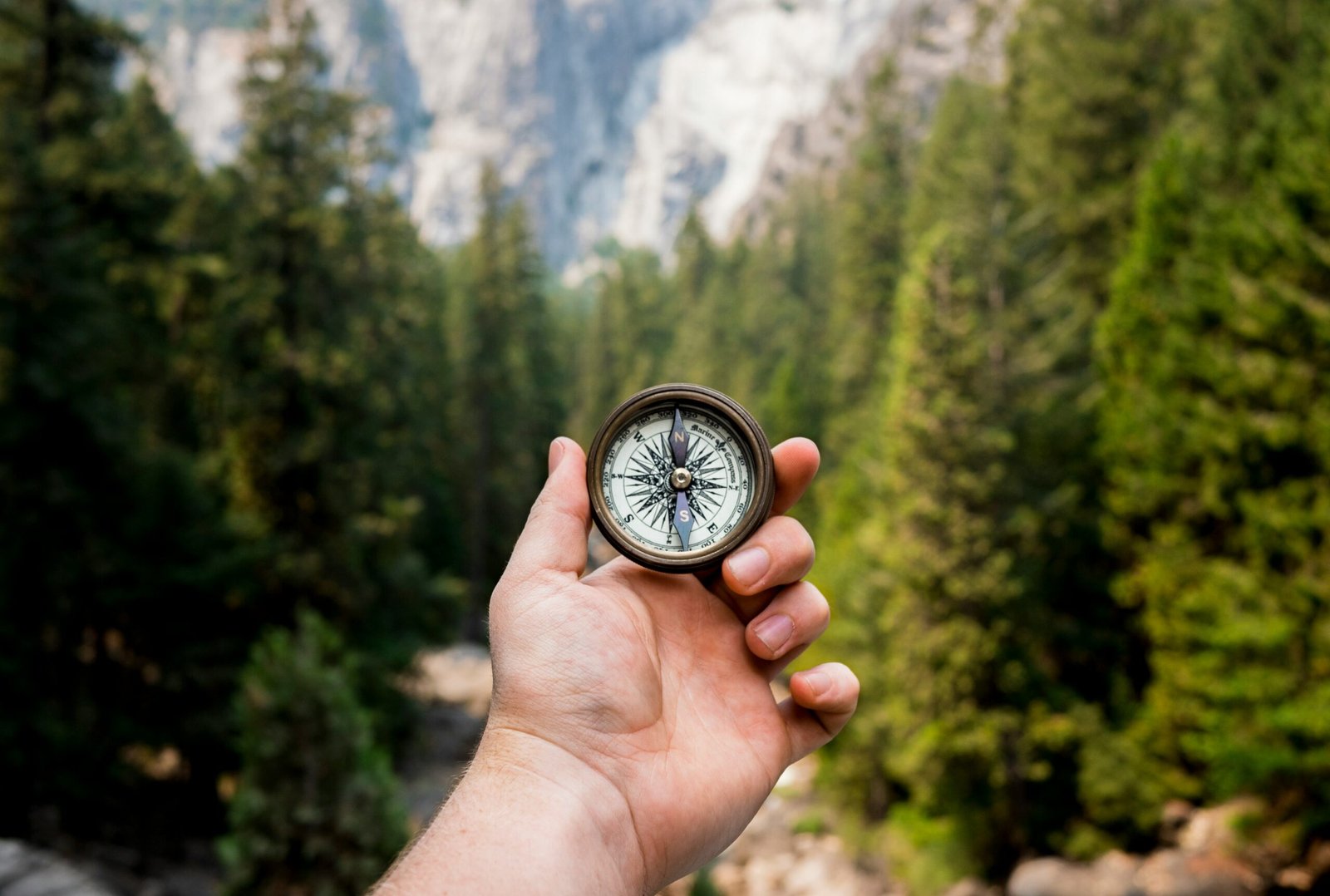Introduction to the National Parks
The national parks in the United States serve as a testament to the country’s commitment to preserving its natural beauty and biodiversity. Established to protect landscapes that exhibit outstanding natural features, these parks offer sanctuary for countless species of wildlife and flora. The United States is home to a diverse array of ecosystems, ranging from the arid deserts of the West to the lush forests of the East, each encapsulated within the boundaries of its national parks.
With over 60 designated national parks spread across the country, choosing which ones to visit can be a daunting task for many outdoor enthusiasts. Each park boasts unique geological formations, breathtaking vistas, and a wealth of recreational opportunities. Whether it is the iconic geysers of Yellowstone, the towering cliffs of Yosemite, or the tranquil beauty of the Great Smoky Mountains, every national park has its own distinct charm that attracts millions of visitors each year.
The significance of these protected lands goes beyond mere aesthetics; they play a vital role in conserving natural resources and habitats. National parks not only safeguard biodiversity but also contribute to scientific research and environmental education. The establishment of such protected areas provides a crucial opportunity for future generations to connect with nature and appreciate the delicate balance of our ecosystems.
As you contemplate your own adventure into the realm of national parks, remember that each destination offers a unique exploration experience. The challenge lies in selecting the parks that resonate with your personal interests and sense of adventure. Regardless of which parks you choose, the journey into these magnificent landscapes promises to enrich your understanding of nature’s wonders and provide memorable experiences that last a lifetime.
Factors That Influence Our Choices
Choosing a national park can be a deeply personal experience, shaped by a myriad of factors that resonate with individual preferences and past encounters. One significant aspect influencing this decision is geographic location. For instance, individuals residing in the eastern United States might have a tendency to favor parks such as Shenandoah or Great Smoky Mountains, which are geographically more accessible. Conversely, those in the west may gravitate toward iconic parks like Yosemite or Yellowstone, which are often focal points due to their renowned landscapes.
Another crucial factor is the type of landscapes some individuals find most appealing. National parks exhibit a diverse array of environments, ranging from impressive mountain ranges and dense forests to arid deserts. An outdoor enthusiast drawn to rock climbing may prefer parks with towering cliffs, while someone who enjoys serene forest walks may favor destinations characterized by sprawling woodlands. This variation in preference underscores how personal tastes in nature can dictate favored park selections.
Recreational opportunities also play a vital role in shaping park preferences. Each national park offers unique activities, such as hiking, camping, and wildlife viewing. For example, a family seeking a camping getaway might prioritize parks that provide well-maintained campgrounds and child-friendly hiking trails. In contrast, wildlife enthusiasts might choose a park based on its reputation for diverse flora and fauna, influencing their overall enjoyment and experience.
Lastly, personal experiences significantly contribute to these preferences. A family trip where cherished memories were created can leave a lasting impression, swaying choices in the future. Whether it’s an exhilarating hike or a tranquil moment by a lake, such experiences solidify emotional connections to specific parks. Thus, the interplay of geographic location, landscape preference, recreational opportunities, and personal experiences creates a complex mosaic that shapes our choices regarding national parks.
Top National Parks Not to Miss
The United States is home to a plethora of national parks, each offering unique experiences and stunning landscapes. Among these, several parks stand out as unmissable destinations for nature enthusiasts. The first park to consider is Yellowstone National Park, renowned for its geothermal features, including the iconic Old Faithful geyser. This park, established in 1872, is often hailed as the first national park in the world and boasts an extraordinary array of wildlife, such as bison and elk, alongside breathtaking scenic vistas.
Next on the list is Yosemite National Park, famed for its striking granite cliffs and ancient sequoias. The park is a paradise for rock climbers and hikers, with the popular Half Dome and El Capitan drawing adventurers from around the globe. Visitors can also marvel at the picturesque waterfalls, including Yosemite Falls, one of the tallest in North America, providing captivating sights year-round.
Moving to the arid landscapes, the Grand Canyon National Park offers an awe-inspiring view of the gigantic canyon carved by the Colorado River. This UNESCO World Heritage Site features numerous viewpoints, such as the South Rim and North Rim, where one can engage in hiking, rafting, and even helicopter tours for a bird’s-eye view of the impressive geological formations.
Lastly, the Great Smoky Mountains National Park, straddling the border between North Carolina and Tennessee, is recognized for its diverse ecosystems and captivating mist-shrouded mountains. With a rich array of trails, from easy walks to challenging hikes, it is a haven for outdoor activities like camping, wildlife watching, and photography, particularly during the vibrant fall foliage.
These parks offer unparalleled opportunities for exploration and appreciation of the natural world, making them essential stops on any national park itinerary.
Best Scenic Drives in National Parks
Exploring the vastness of national parks in the USA provides a unique opportunity to witness nature’s beauty, and one of the best ways to experience this is through scenic drives. Many national parks feature designated routes that not only enhance accessibility but also provide visitors with breathtaking views of the diverse landscapes that define these cherished areas. Scenic drives serve as more than just a means of transportation; they often transform a simple journey into an unforgettable adventure filled with striking vistas and picturesque moments.
One exemplary scenic drive can be found in Yellowstone National Park, where the Grand Loop Road allows travelers to indulge in stunning views of geothermal features, wildlife, and lush forests. Spanning over 140 miles, this route provides easy access to iconic sites such as Old Faithful and the Grand Canyon of the Yellowstone, making it a must-see for anyone looking to immerse themselves in the park’s natural wonders. Similarly, the Going-to-the-Sun Road in Glacier National Park offers a remarkable experience, as it traverses through jaw-dropping mountain landscapes and pristine lakes, showcasing the park’s unique geology and ecosystem.
Moreover, the Blue Ridge Parkway serves as an ideal scenic drive that links Great Smoky Mountains National Park and Shenandoah National Park. This drive stretches for 469 miles and features breathtaking views of the Appalachian Mountains, making it one of the most photographed roadways in the country. Travelers can enjoy countless lookout points and access numerous hiking trails, enhancing the overall experience of visiting these remarkable parks. Each of these scenic roads epitomizes the beauty inherent in America’s national parks, seamlessly connecting visitors with nature while providing unforgettable memories along the way.
Best Road Trips Featuring National Parks
One of the most rewarding ways to experience the beauty of the United States’ national parks is through a well-planned road trip. The vast landscapes and diverse ecosystems offer travelers the opportunity to immerse themselves in nature while visiting multiple national parks in a single journey. Several popular itineraries feature stunning scenery and provide ample opportunities for exploration.
One such classic road trip is the “Grand Circle,” which includes iconic national parks in the Southwest. Starting in Las Vegas, Nevada, travelers can visit Zion National Park in Utah, known for its towering cliffs and beautiful canyons. From there, the journey continues to Bryce Canyon National Park, famous for its unique hoodoo rock formations. Further along the route, visitors can explore Capitol Reef National Park and Arches National Park, both offering striking geological features and breathtaking landscapes, culminating in a visit to Canyonlands National Park before returning to Las Vegas.
Another exceptional road trip experience is the “Pacific Coast Highway,” which stretches along California’s stunning coast. Travelers can begin in San Francisco, heading south to merge with the coastal route. Along the way, they can visit the majestic redwoods of the Redwood National and State Parks. As the journey progresses, the beauty of Point Reyes National Seashore and Pinnacles National Park adds to the allure. Ending in Los Angeles, this trip offers a perfect blend of coastal and national park experiences.
Lastly, the “Rocky Mountain Loop” encompasses several national parks in Colorado. Beginning and concluding in Denver, this itinerary includes stops at Rocky Mountain National Park, known for its alpine lakes and towering peaks, along with visits to nearby state parks that offer stunning mountain vistas. With the right planning, road trips that feature national parks can become unforgettable adventures, allowing travelers to create lasting memories while appreciating the natural beauty of the United States.
Personal Memories and Experiences
Throughout my journeys across various national parks in the United States, I have gathered a treasure trove of memories, each etched in my mind with the freshness of the moment. One of the most memorable experiences took place in Yellowstone National Park, where I embarked on a challenging hike through the breathtaking trails of the Grand Canyon of the Yellowstone. The vibrant colors of the canyon walls were surreal, and the sound of the roaring waterfalls provided a soundtrack to the adventure. As I reached the viewpoint, I felt an overwhelming sense of achievement witnessing the natural wonder stretching out before me.
Another unforgettable moment occurred during a summer family trip to Acadia National Park in Maine. We set out early one morning to tackle the famous Precipice Trail. The climb was steep and rocky; however, as a family, we encouraged one another to push through the difficulty. Upon reaching the summit, we were rewarded with a panoramic view of the Atlantic coast, and I still cherish the laughter and joy shared in that moment. It was a reminder of the importance of connecting with family in nature, forging bonds that remain strong, even with the passage of time.
Likewise, my encounters with wildlife in these parks have left an indelible mark on my memory. At Glacier National Park, observing a mother grizzly bear with her cubs was a poignant reminder of nature’s delicate balance. I stood at a respectful distance, filled with awe, as I captured that fleeting moment on camera. These personal experiences serve as a testament to the beauty and unpredictability of nature, encouraging us to appreciate it more deeply. I invite fellow nature lovers to share their stories and experiences, creating a rich tapestry of moments that can be recalled with fondness in the years to come.
Practical Tips for Visiting National Parks
Visiting national parks in the USA offers a unique opportunity to connect with nature and explore diverse landscapes. To ensure a fulfilling experience, it is essential to plan your visit carefully. First and foremost, consider the best times to visit. Each park has its own peak seasons, typically during spring and fall, when weather conditions are most favorable and wildlife is most active. Researching each national park beforehand can help you identify optimal times suited to your interests, such as wildflower blooms or wildlife migrations.
Packing appropriately is vital for a successful trip. Essential items include sturdy hiking boots, weather-appropriate clothing, and a reliable daypack to carry snacks and water. Sun protection is necessary, as many parks experience intense sunlight, so sunscreen, hats, and sunglasses should be included in your gear. Additionally, a camera or binoculars can enhance your experience, allowing you to capture stunning vistas and observe wildlife from a safe distance.
Safety is paramount while exploring national parks. Familiarize yourself with the park’s regulations and follow posted signs and guidelines. Be aware of your surroundings, especially when encountering wildlife; maintain a respectful distance and never feed animals. It is also advisable to inform someone about your hiking plans and expected return time in case of emergencies.
Finally, when visiting national parks, it is crucial to practice responsible travel. Adhere to the Leave No Trace principles to minimize your environmental impact. This includes staying on designated trails, packing out all trash, and respecting wildlife habitats. By doing so, you contribute to the preservation of these breathtaking landscapes for future generations to enjoy, ensuring that the splendor of national parks remains unspoiled and accessible.
Conservation and Importance of National Parks
National parks are critical to the conservation of the United States’ diverse ecosystems and natural landscapes. They serve as sanctuaries for wildlife and protect invaluable resources. From the towering peaks of the Rockies to the lush coastal forests of the Pacific Northwest, these parks provide critical habitats for countless species, some of which are endangered. The preservation of these natural areas plays an essential role not only in species protection but also in maintaining ecological balance and promoting biodiversity.
However, national parks are not without their challenges. One of the most pressing issues facing these treasured landscapes is climate change, which threatens to alter ecosystems at an unprecedented pace. Rising temperatures, changing precipitation patterns, and increased frequency of extreme weather events impact flora and fauna alike. Additionally, tourism pressures can exacerbate these problems, leading to habitat degradation, pollution, and overcrowding in popular areas. With millions of visitors every year, it’s crucial to balance public enjoyment with the imperative of preserving these natural wonders.
Visitors to national parks can contribute positively to conservation efforts through responsible practices. Engaging in Leave No Trace principles, such as minimizing campfire impacts, staying on designated trails, and respecting wildlife, helps preserve the integrity of the environment. Supporting park initiatives by volunteering, participating in clean-up events, and donating to conservation funds can also make a significant difference. Furthermore, educational programs offered within the parks enhance public awareness about the importance of safeguarding these landscapes for future generations.
Ultimately, the preservation of national parks is vital not only for the wildlife they support but also for human wellbeing and cultural heritage. By recognizing their importance and participating in conservation efforts, visitors can help ensure that these remarkable natural areas remain intact and accessible for years to come.
Call to Action: Share Your Favorites
As we conclude our exploration of the unmissable national parks across the United States, we invite you to join the conversation and share your personal experiences with these natural wonders. Each national park carries its own unique charm and beauty, waiting to be discovered and cherished. Whether you have trekked through the towering forests of Yosemite, witnessed the breathtaking landscapes of the Grand Canyon, or marveled at the diverse wildlife in Yellowstone, your stories and memories are invaluable to our community.
We encourage you to leave a comment below detailing your favorite national park and what made your visit truly unforgettable. Did you encounter any majestic creatures along your hike? Perhaps a stunning sunrise or sunset left a lasting impression on you? Sharing these experiences not only enriches our collective knowledge but also inspires fellow nature lovers to explore these magnificent sites.
Furthermore, if you have discovered lesser-known parks or hidden gems that often go overlooked, we want to hear about those as well. Every recommendation adds to our growing list and provides others with new opportunities to connect with nature. By fostering this discussion, we create a vibrant community of outdoor enthusiasts who can inspire each other to embark on new adventures.
Your contributions are vital as they breathe life into the love for exploration and the outdoors. Let us celebrate the beauty of the national parks together. Share your favorites, tag your friends, and encourage them to join in the fun! Together, we can cultivate a deeper appreciation for our natural heritage and ensure the preservation of these stunning landscapes for generations to come.





